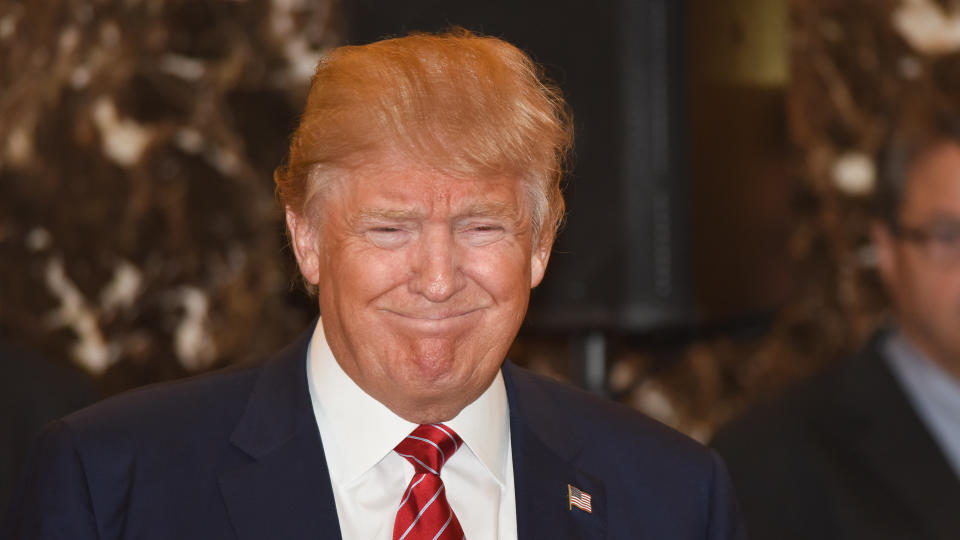What a Trump Presidency Could Mean for the Middle Class

One thing that just about every presidential candidate from both parties and all corners of the country have in common is a promise to lift the middle class.
After all, campaigning to help the rich get richer probably wouldn’t get them very far.
Find Out: I’m A Retirement Planner: 4 Moves You Should Make If You Think Trump Will Win the 2024 Election
Learn More: 5 Subtly Genius Things All Wealthy People Do With Their Money
Even so, the rich get richer with every presidential cycle while the middle class continues shrinking.
Like President Joe Biden, former President Donald Trump vows to change all that if elected to another term — but what impact would a second Trump presidency have on the middle class?
Wealthy people know the best money secrets. Learn how to copy them.
More Tax Cuts Could Help the Middle Class a Little, the Rich a Lot and Make Future Tax Increases Likely
John F. Pace, founder of Pace & Associates, has over 40 years of experience as a CPA, including roles as vice president at U.S. Trust, a family office executive for a Forbes 400 family and a senior manager for the 38th-largest CPA firm in America.
Looking back at Trump’s first term, he believes a second stint in the White House would most immediately impact the middle class through his area of expertise.
“A second Trump presidency could affect middle-class finances through potential tax policy changes,” Pace said. “During Trump’s first term, the Tax Cuts and Jobs Act (TCJA) of 2017 offered limited benefits to middle-income earners and more extensive benefits to the wealthy and corporations. Similar future policies could result in minimal tax relief for the middle class and possibly larger budget deficits, raising concerns about future tax increases or cuts in essential services.”
In assessing the impact of the TCJA, the nonprofit, nonpartisan Brookings Institute wrote, “The 2017 tax law doesn’t help the middle class. The benefits of the law tilt toward the well-off both now and in the future, according to the distributional analysis of the Tax Policy Center. By 2027, benefits of the tax law flow entirely to the rich.”
Media Bias/Fact Check rates the Tax Policy Center as “least biased in research.”
Discover More: I’m an Economist: Here’s What a Trump Win in November Would Mean for the Tax Burden on the Poor
Repealing the ACA Won’t Be Easy, but Trump Says He’ll Try
Griff Harris, CIC, president of Griffith E. Harris Insurance Services, is an insurance expert with experience in risk management and economic forecasting. He’s keeping a close eye on how a second Trump term might impact the middle class’ ability to afford health insurance, which, thanks to federal credits and subsidies, ties into tax policy.
“Healthcare costs are another significant factor,” he said. “Trump’s policies aimed at repealing the Affordable Care Act could lead to higher insurance premiums and reduced coverage options for middle-class families.”
In January, the Washington Post reported that a record 21 million people signed up for ACA Marketplace-based health insurance — the third straight year of record Obamacare enrollment — just as Trump doubled down on his longstanding vow to eliminate the ACA.
“This would disproportionately affect those who rely on subsidized healthcare plans, increasing out-of-pocket expenses and financial insecurity,” Harris said.
Deregulation Could Lower Prices for Utilities and Goods but Eliminate Key Consumer Protections
Donald Trump has made it clear that he despises regulations nearly as much as he loathes the ACA, but deregulation can be a double-edged sword that’s both good and bad for the middle class, which could enjoy lower prices while suffering from fewer protections.
“Deregulation in industries such as energy and finance might lower costs for consumers,” said Dennis Shirshikov, head of growth at real estate investment management platform Gosummer and a professor of finance and economics at the City University of New York. “For example, reduced regulatory burdens on the energy sector could lead to lower utility costs, a direct financial benefit for the middle class. An example of this can be seen in states like Texas, where deregulation has historically led to lower electricity prices compared to states with more stringent regulations. However, it’s crucial to balance these potential short-term gains with long-term environmental and economic sustainability concerns.”
A New Round of Trade Wars Could Raise Already High Prices
According to the Tax Foundation, which Media Bias/Fact Check ranks as “right-center biased,” “The Trump administration imposed nearly $80 billion worth of new taxes on Americans by levying tariffs on thousands of products valued at approximately $380 billion in 2018 and 2019, amounting to one of the largest tax increases in decades.”
If re-elected, Trump has promised to renew and expand his trade wars.
“Trump’s aggressive stance on trade, including tariffs on goods from countries like China, aims to protect American jobs but also raises the cost of goods,” Shirshikov said. “Middle-class families might face higher prices on everyday items, which can erode the purchasing power of any tax savings.”
A report from the Peterson Institute for International Economics, which Media Bias/Fact Check ranks as “least biased with a slight right lean,” noted that Trump has proposed a 10% across-the-board tariff on foreign imports and up to 60% on Chinese goods.
The report’s authors wrote, “The tariffs would reduce after-tax incomes by 3.5% for those in the bottom half of the income distribution and cost a typical household in the middle of the income distribution about $1,700 in increased taxes each year.”
More From GOBankingRates
This article originally appeared on GOBankingRates.com: What a Trump Presidency Could Mean for the Middle Class

 Yahoo Finance
Yahoo Finance 